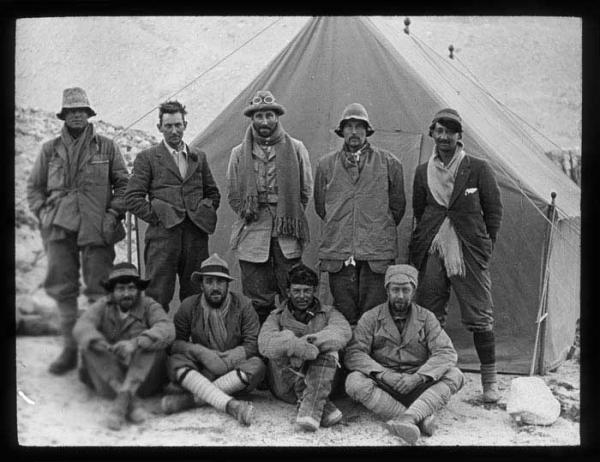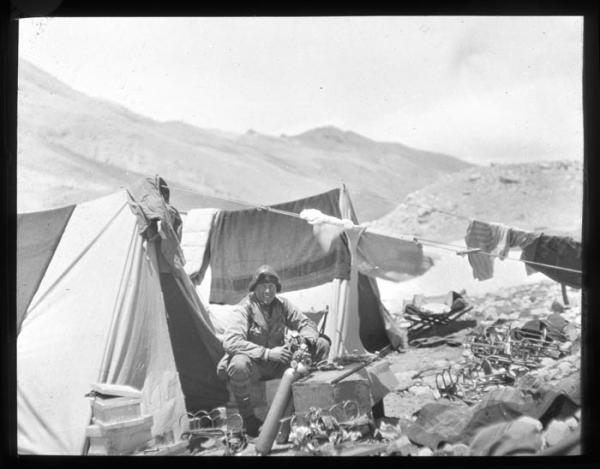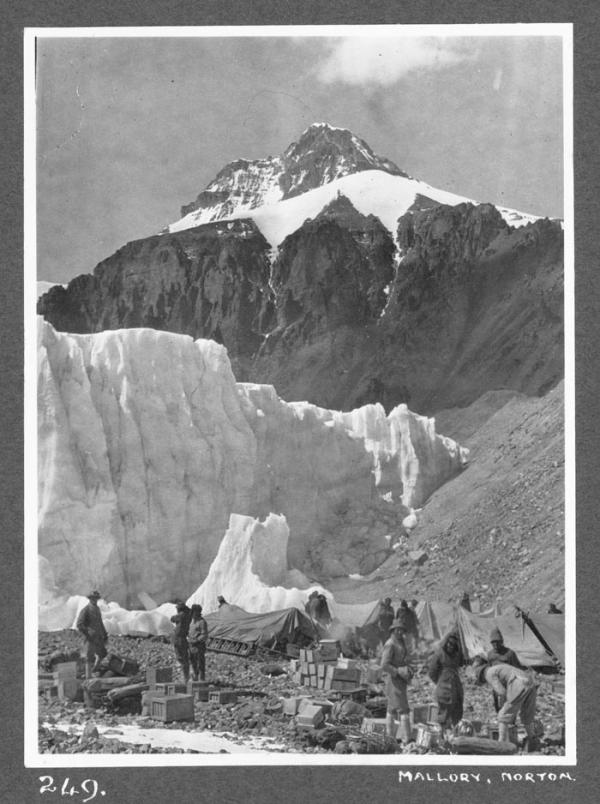Images: Everest, 1924

Ever Group

Members of the 1924 Everest expedition at base camp, 16,500 feet (5,029 meters), Tibet. Back row, left to right: Andrew Irvine, George Mallory, Edward Norton, Noel Odell, John MacDonald. Front row: Edward Shebbeare, Geoffrey Bruce, Howard Somervell, Bentley Beetham.
Mallory was a superb climber, one of the best in his day. There is still much speculation over why he chose Irvine to be his climbing companion for the summit attempt that killed them both. They were last seen alive on June 8th. Other members of the campaign were far more experienced climbers, specifically Noel Odell (standing second from the right), the last one to catch a glimpse of the two men.
"There was a sudden clearing above me and I saw the whole summit ridge and final peak of Everest unveiled," Odell wrote in his account of the day's events. Odell was climbing several thousand feet below, on his way up prepare camp for the two once they returned from the afternoon's attempt. "I noticed far away on a snow-slope... a tiny object moving and approaching the rock step. A second object followed, and then the first climbed to the top of the step. As I stood intently watching this dramatic appearance, the scene became enveloped in cloud."
Ever Irvine

Andrew Irvine in camp. He was only 22 years old when he perished on the mountain. Irvine was not only incredibly strong, he was also quite mechanically inclined. He was always tinkering with the team's oxygen tanks and making improvements. (It looks as though he may have been doing so when this photo was taken.) Some historians wonder if this is why Mallory chose Irvine to accompany him, since the pair brought oxygen on their ascent.
Ever Basecamp

Base camp, seen from afar. The 1924 expedition approached Everest from the north side, from Tibet. It's now known this route is far more treacherous than the climb from the southern side, out of Nepal. But at the time, Nepal was closed to westerners, so the Tibetan approach was the only option available to the British explorers.
Ever Camp Men

Camp II, further up the mountain. The 1924 expedition marked the British Mount Everest Committee's third attempt to scale the peak. Mallory had been on the two previous attempts. During the 1922 expedition, he'd had been involved in two serious accidents, one of which killed seven men. The tragedy apparently didn't deter him.
Ever Campsnow

Even everyday tasks can be a challenge at the dizzying heights on Mount Everest. It looks as though the masked and goggled man in this photo is sitting down to a meal.
Get the world’s most fascinating discoveries delivered straight to your inbox.
In the 1920s, the explorers dressed in layers of wool, poor protection from the ravages of the howling winds, frigid temperatures, and punishing snows of Everest.


